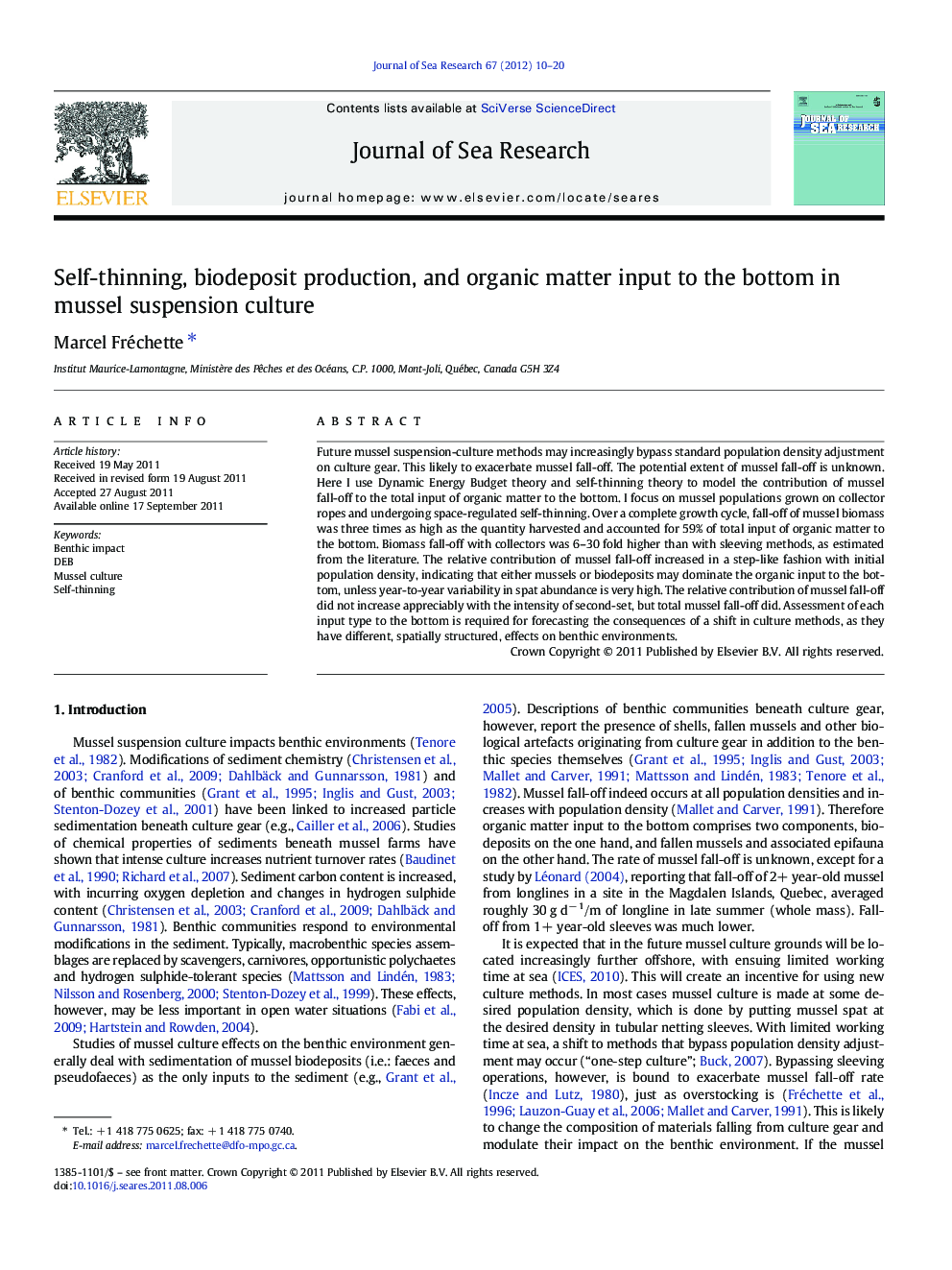| Article ID | Journal | Published Year | Pages | File Type |
|---|---|---|---|---|
| 4550098 | Journal of Sea Research | 2012 | 11 Pages |
Future mussel suspension-culture methods may increasingly bypass standard population density adjustment on culture gear. This likely to exacerbate mussel fall-off. The potential extent of mussel fall-off is unknown. Here I use Dynamic Energy Budget theory and self-thinning theory to model the contribution of mussel fall-off to the total input of organic matter to the bottom. I focus on mussel populations grown on collector ropes and undergoing space-regulated self-thinning. Over a complete growth cycle, fall-off of mussel biomass was three times as high as the quantity harvested and accounted for 59% of total input of organic matter to the bottom. Biomass fall-off with collectors was 6–30 fold higher than with sleeving methods, as estimated from the literature. The relative contribution of mussel fall-off increased in a step-like fashion with initial population density, indicating that either mussels or biodeposits may dominate the organic input to the bottom, unless year-to-year variability in spat abundance is very high. The relative contribution of mussel fall-off did not increase appreciably with the intensity of second-set, but total mussel fall-off did. Assessment of each input type to the bottom is required for forecasting the consequences of a shift in culture methods, as they have different, spatially structured, effects on benthic environments.
► Mussels grown on spat collector ropes lost three times as much biomass as harvested. ► Biomass fall-off was 6–30 fold higher than expected with standard culture methods. ► Fall-off accounted for over half the total input of organic matter to the bottom. ► Relative inputs of faeces and mussels shifted abruptly with initial spat abundance. ► Second-year settlers had little effect on the relative inputs of mussels and faeces.
